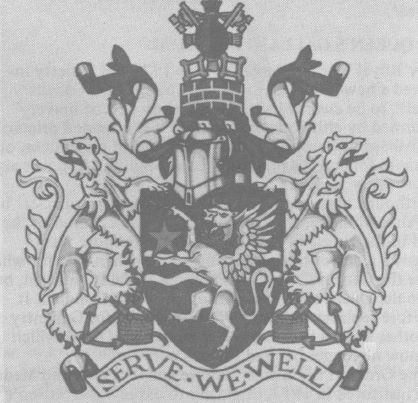Chelsea Building Society
| Heraldry of the World |
| British heraldry portal Civic heraldry of the United Kingdom |
|
CHELSEA BUILDING SOCIETY
Official blazon
Arms: Gules, a fess wavy argent charged with a bar wavy azure, over all a winged bull rampant argent, armed unguled gorged with a crown and holding between the forelegs a mullet Or.
Crest: On a wreath of the colours on a mount vert a wall gules masoned argent, surmounted by two keys in sal-tire wards upward and outward pendent from the wards by the strings Or, a purse per pale gules and sable tasselled Or.
Supporters: On either side a lion reguardant argent, resting the interior hind leg on an anchor that on the dexter in bend sinister the stock resting on the cable coiled to the sinister Or that on the sinister in bend the stock resting upon the cable coiled to the dexter Or.
Motto: Serve we well
Origin/meaning
The arms were officially granted in 1970 to the Chelsea and South London Building Society (transferred 1971 to the Chelsea Building Society).
The arms demonstrate the Society's links with the Chelsea area. One of the supporters in the arms of the Royal Borough of Kensington and Chelsea is a winged bull - symbol of St. Luke, patron saint of Chelsea parish. The arms of both of the former Metropolitan Boroughs of Chelsea and Camberwell had red fields and charges of silver. The blue bar and the anchors represent the Thames and its users.
The crest seems to sum up everything that a Building Society stands for: the security of houses, of their tenure, and of the investors' savings. A silver lion rampant, used here as supporter, featured in the former Chelsea Borough's arms and was thought to have been derived from the Cadogan family's lion. The Cadogans, Lords of the Manor, derived the manor by marriage with a daughter of Sir Hans Sloane, the physician, Mayor and antiquary whose collection formed the origins of the British Museum.
Contact and Support
Partners:
Your logo here ?
Contact us
© since 1995, Heraldry of the World, Ralf Hartemink 
Index of the site












